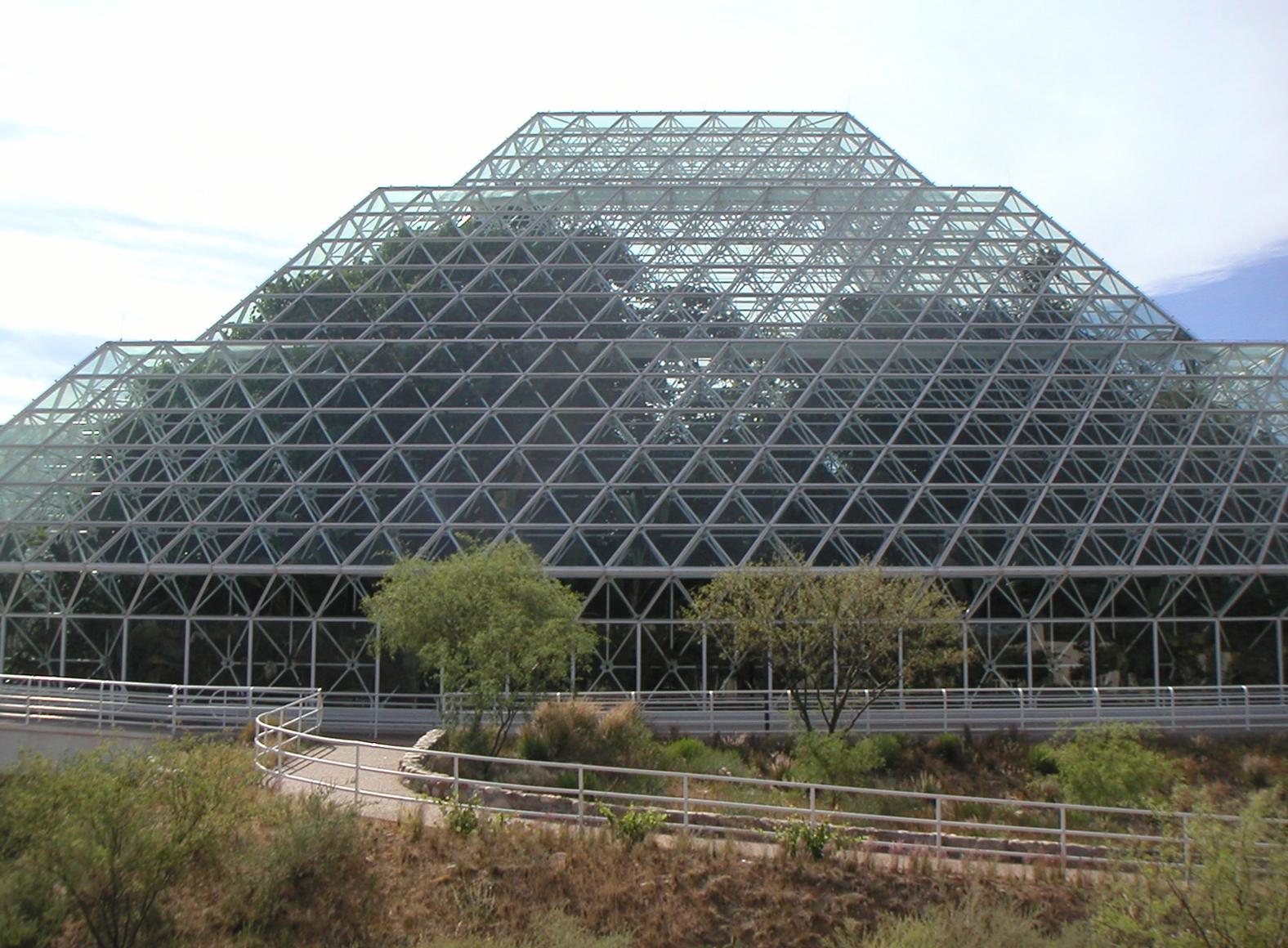In the early 1990s scientists set up Biosphere 2, a 3-acre closed ecosystem built in a desert in Oracle, Arizona. It was designed to be an earth within an earth (The Truman Show before it became famous), enclosed in glass and filled with soil, air, water, and animals. The creators put in fragments of rainforest, savanna, thornscrub, desert, pond, marsh, coral reef, and ocean to simulate Earth's natural habitats. The only connections to the outside world were electrical power and communication.
On September 26, 1991, eight volunteers entered Biosphere 2 (they were called Biospherians) to see if human life could be independently sustained in bubbles anywhere in the solar system not lethally attacked by heat or dangerous radiation. For about five months everything went as planned but then...the concentration of oxygen dropped a level similar to that of 17,500 feet above Earth, at which point oxygen was pumped in from the outside. Carbon dioxide levels rose sharply, despite an artificial recycling procedure. The level of nitrous oxide also went up.
Many of the vertebrate species and animal pollinators that were put in the sphere went extinct at an extraordinarily fast rate. Because of this, the amount of smaller insects and vines exploded. The vines had to be cut by hand.
The Biospherians learned to manage these things though, and stayed inside the dome for two years, as was originally planned. So it wasn't a complete failure. It taught us the vulnerability of human life and the living environment on which we depend.
Now Biosphere 2 is under the management of the University of Arizona and is being used more or less as an ecosystem museum.
If you're using Chrome, the right column of this blog isn't displaying correctly. Switch to Firefox. If you're using the iPad, you're a tool. If you're using IE, go kill yourself.
(This person is kinda upset that I dissed their favorite browser. I actually use Chrome and I like it, but for some reason the layout here is different than on Firefox. And of course, the iPad and IE just plain suck. You tool.)
(This person is kinda upset that I dissed their favorite browser. I actually use Chrome and I like it, but for some reason the layout here is different than on Firefox. And of course, the iPad and IE just plain suck. You tool.)
Tuesday, April 14, 2009
Biosphere 2
Categories:
energy + environment,
science + math,
u.s. - west
Subscribe to:
Post Comments (Atom)


0 comments:
Post a Comment